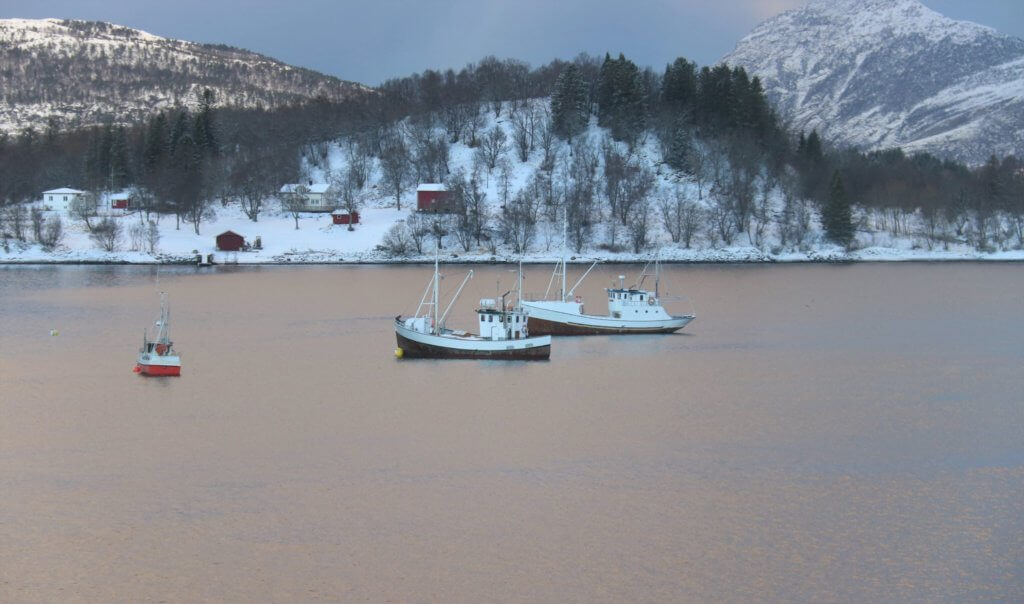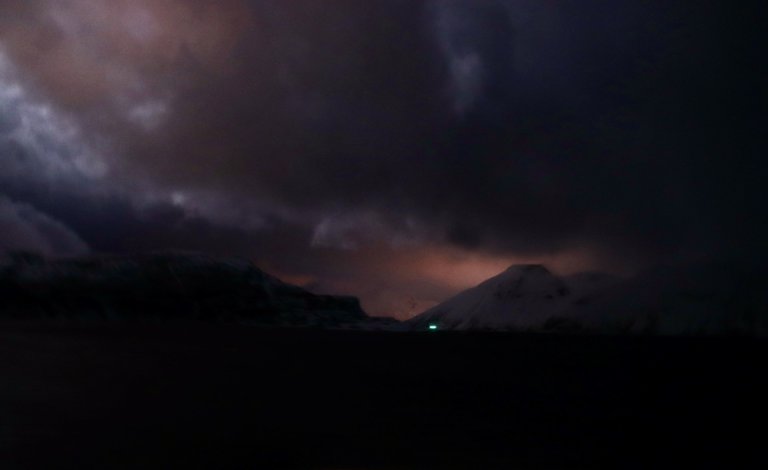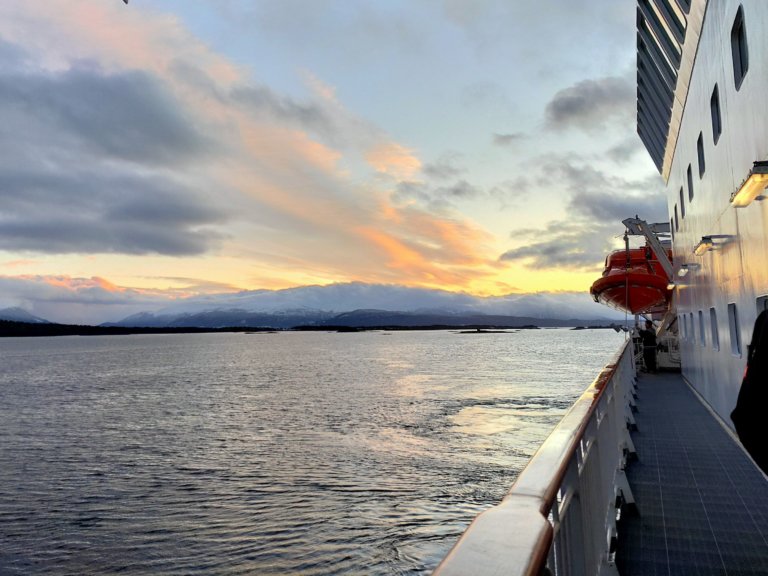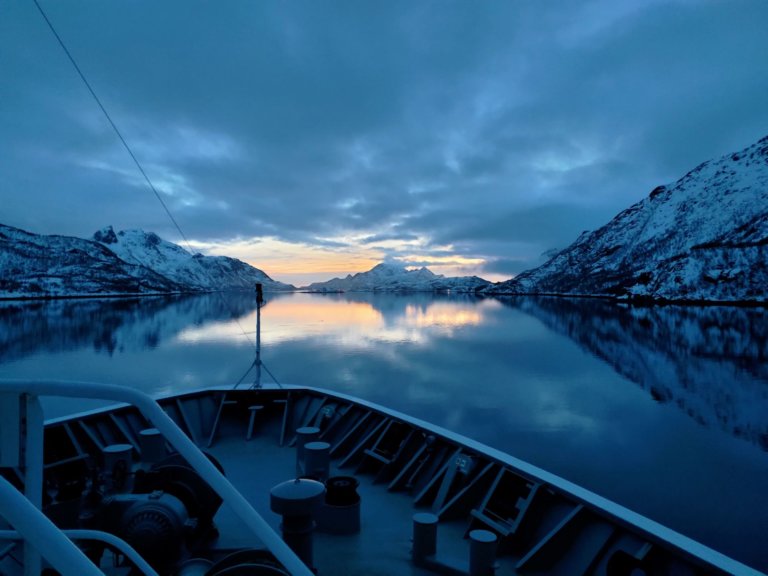Northbound Norwegian Coast Hurtigruten Cruise on MS Kong Harald
31 January to 7th February 2020
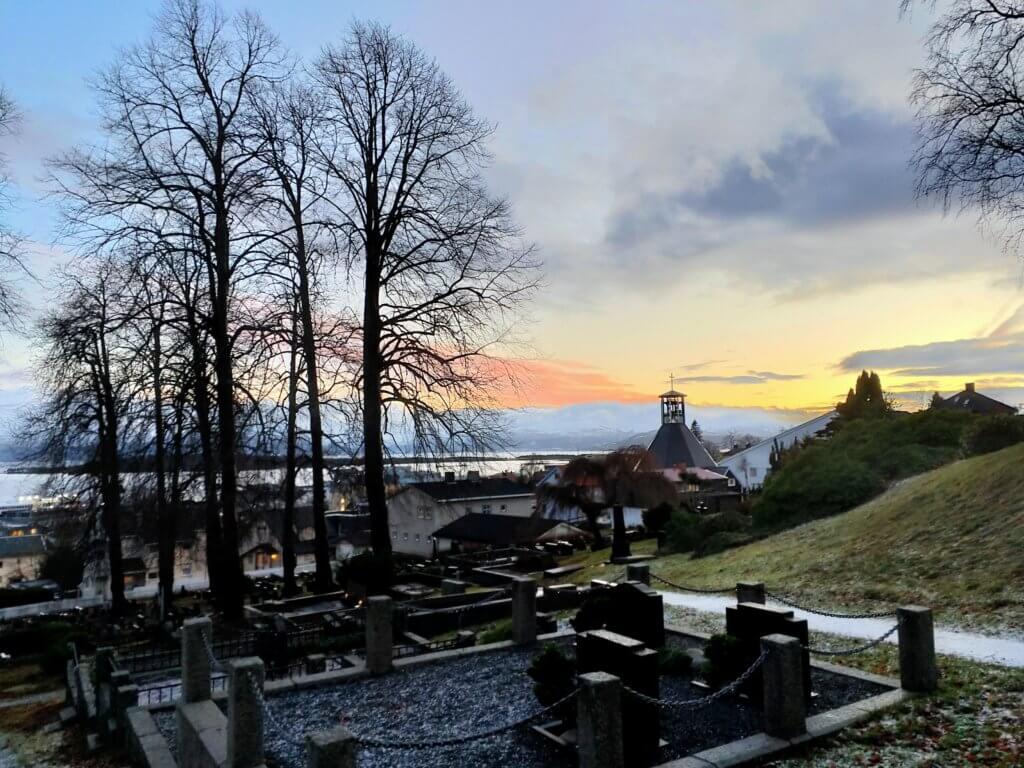
A 12 day winter cruise along the Norwegian Coast chasing the Northern Lights. How wonderful we thought – all that darkness, all that time to rest, relax and watch the coast go by. Then came the cruising itinerary. Hmmmm this looks intense – 66 stops in 12 days!!! Then the daily program – lectures, points of interest, briefings. Where was the rest and relax?
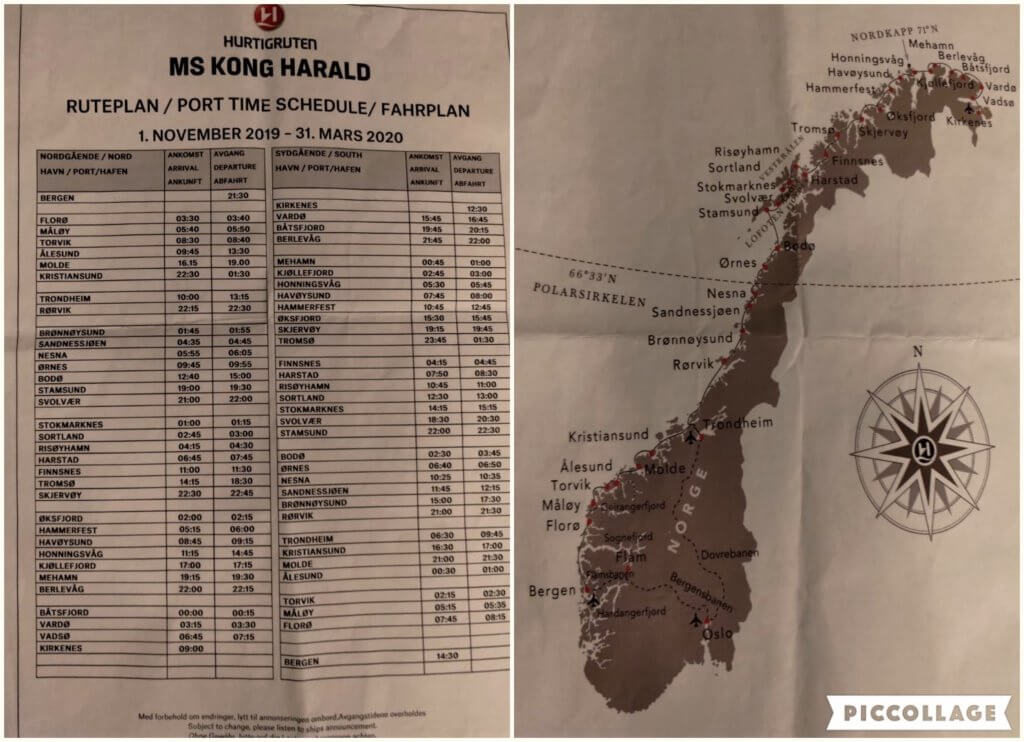
We quickly discovered many stops were working stops only: delivering post, cargo, and local people to the many towns up the coast. Fun to watch the comings and goings from our seagull position on the decks. Longer stops that enabled us to get off and explore were scattered throughout the itinerary – both day and long winter’s night.
In an effort to not deliver a blow by blow account of our life on board here are highlights of the daily diary of our voyage on the MS Kong Harald, a recently refurbished ship in the Hurtigruten line.
In summary, boredom was a pipe dream when there was so much to do, see, and learn.
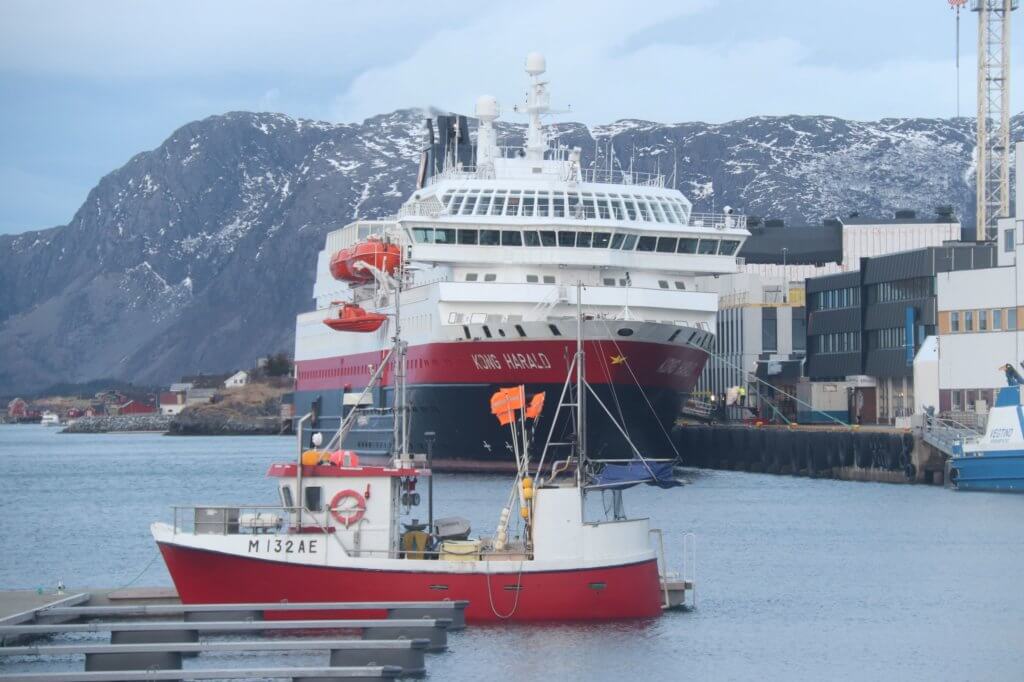
Day 1 – well actually called Day 2. A habit I am not all that fond of in many tours! Day 1 was boarding late afternoon – to my mind, not a real day. The end of my little soap-box!
Waking up in the morning we arrived into Alesund. The poster-perfect town one imagined a winter Norwegian town to be and a little bit more. Art deco design, colourful houses, canals through the town, snow highlighting scenes everywhere and mountains closely hugging the town.
Beauty at every turn.
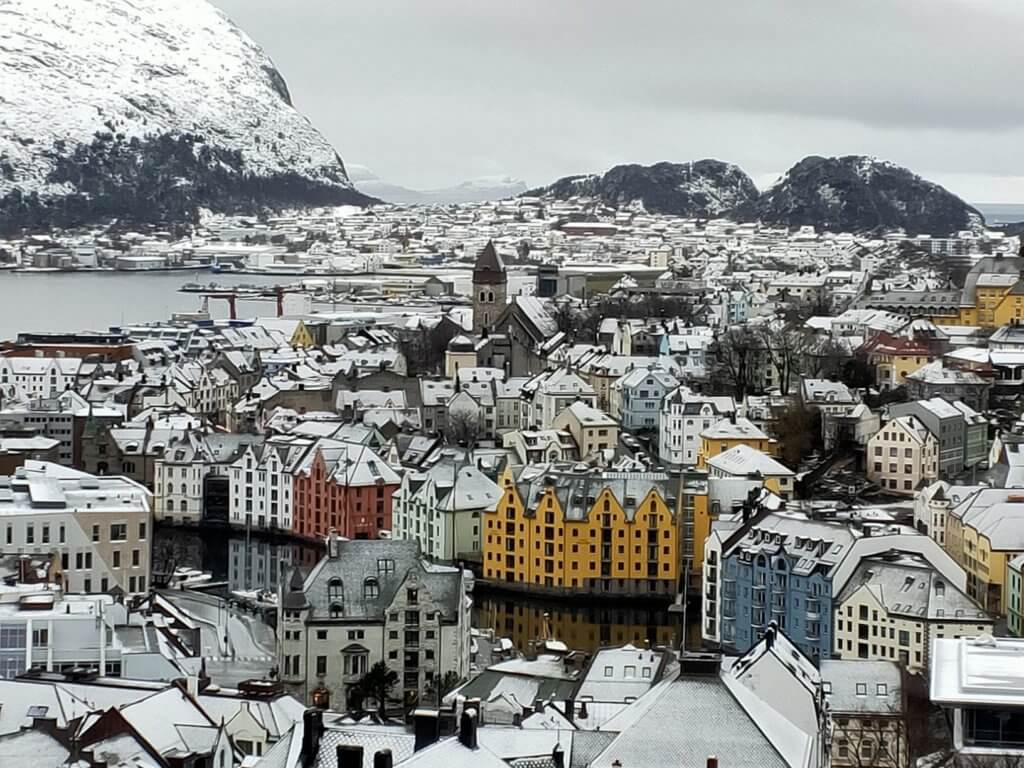
Executing a self-guided hike was a bit of a his-her navigational challenge but we made it… eventually. Beginning with the 417 steps up to a photographer’s dream view of the lovely town.
Once back in town we discovered art deco building facades, statues recognising the early historical figures and fishing era, historical buildings and the pretty building lined canals.
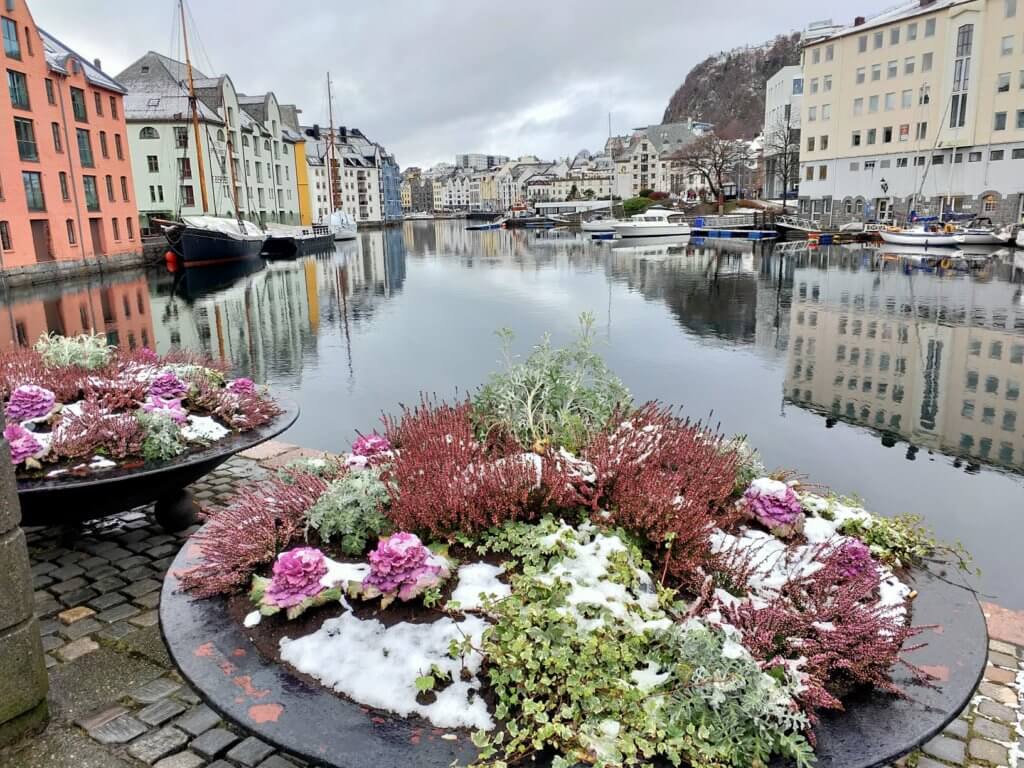
In the afternoon we arrived into Molde. Another pretty town, and another self-guided walk. This time we deferred to our more map-savvy friend and the walk went without disagreement on left or right turns! This walk again took us up the hill for a view over the town – with the added colour of the sun setting out to sea as we stood atop the hill overlooking the cemetery.
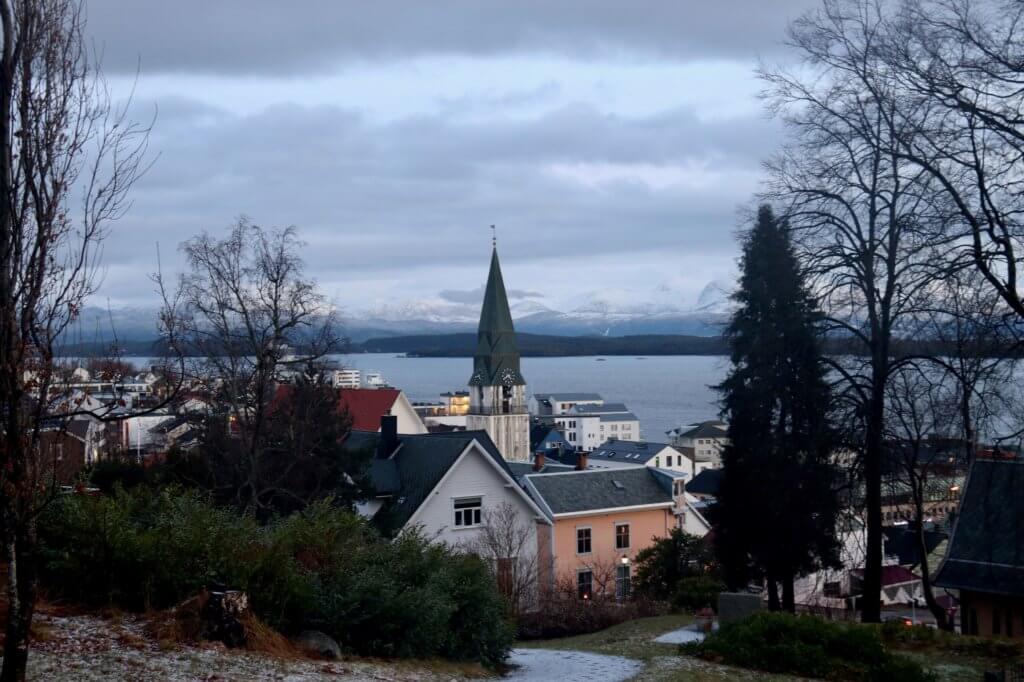
Through the church and graveyard up past grand old houses and turning near a dramatically angled building of modern wooden architecture – the Krona. Just a little further on we came to the Bygata – a museum of dwellings recreating early Molde before war destroyed the town. The Romsdalsmuseet was closed at the time we passed through but a walk through the Bygata was open. This re-created village had many styles of house and designed to feel like a step back in time. This was made to feel more authentic as darkness fell and with buildings low lit along the darkening streets and around the icy pond.
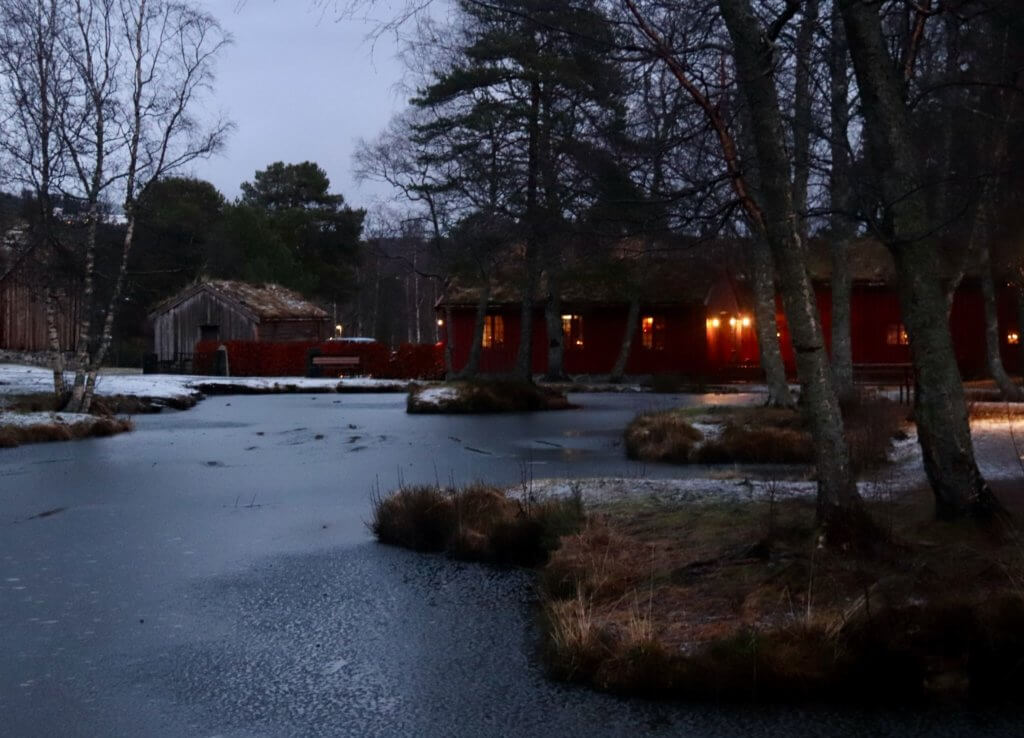
Our first official excursion was a walking tour from 10 pm till Midnight in Kristiansund. Beginning at the large imposing stone Opera house completed in 1914 and still home to performances. The old stone building, gently lit evoked ghostly visions in the late-night – easier to see it as the prison it was during WWII than an elegant opera house.
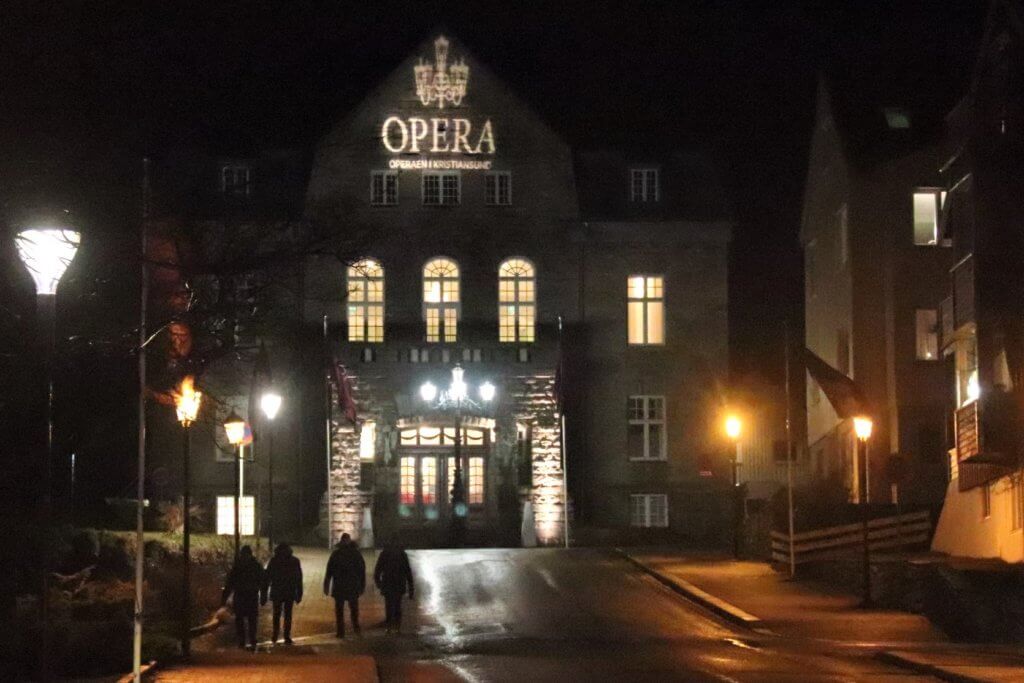
Once up the hill behind the town, the walk took us through nature, along darkened paths, beside icy ponds and aquaducts winding up to the Varden Watchtower. Not a walk to do alone and unfamiliar. Here a sparkling night view over the town. The return to the walk was a little easier with street lighting and warmly lit houses lining our path back.
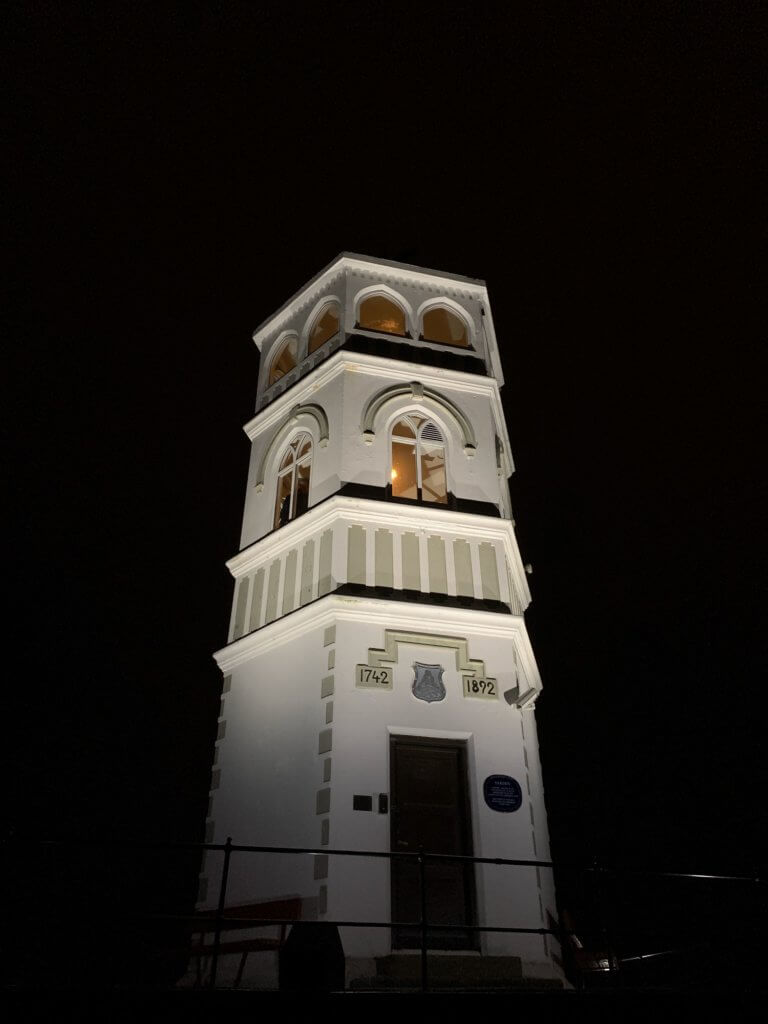
Day 3
Trondheim – assuredly described as the most beautiful city in the world by Torstein, Expedition team member, all-round font of knowledge and entertainment AND Trondheim resident!! Another self-guided walk – again putting upon our friend to navigate.
The bitter wind was picking up and the rain sleeting in brief but icy showers as we began our walk. Battling along the exposed harbourfront was a challenge so after a helpful conversation with locals out for a walk we were directed to a more sheltered route through town. Either direction we were to end up in the old town.
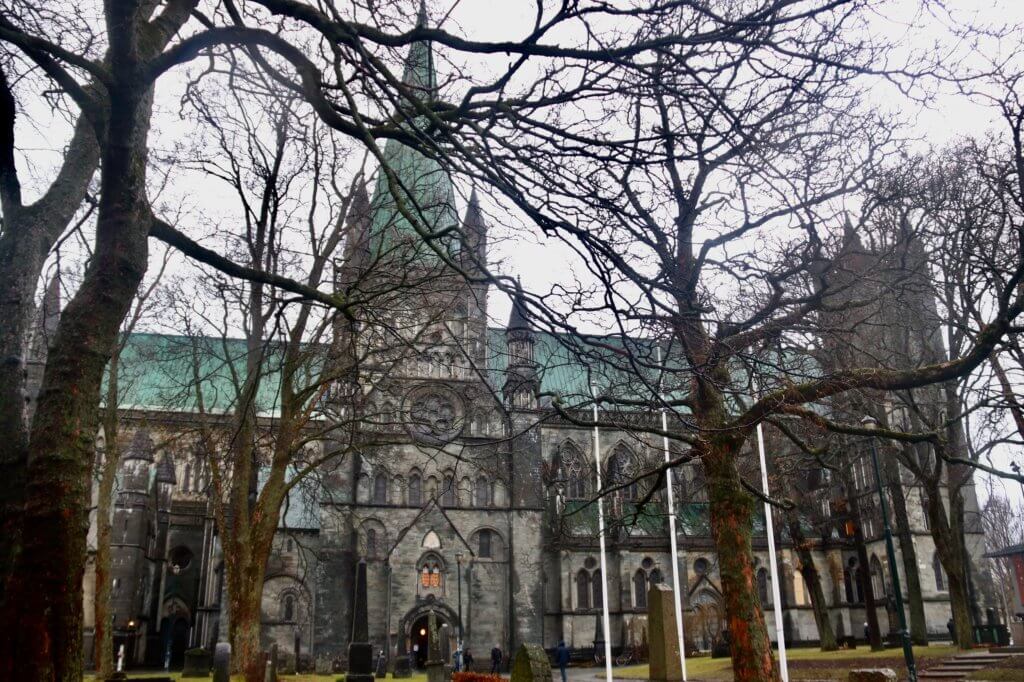
On the way, we passed the Nidaros Cathedral – built during the 9th to 12th century – a large stone cathedral with ornate decoration on all sides – a fleeting view only as the weather was not conducive to our sightseeing minds and A service was in progress within the cathedral. It is the burial place of King Olav II – now the patron saint of Norway.
The Bakklandet old town was a treat even in the icy rain and chilly weather. Wooden buildings of many colours, wide cobbled streets, a wide canal through the centre with an ornate red iron bridge crossing. A long history recorded at least from the 15th century.
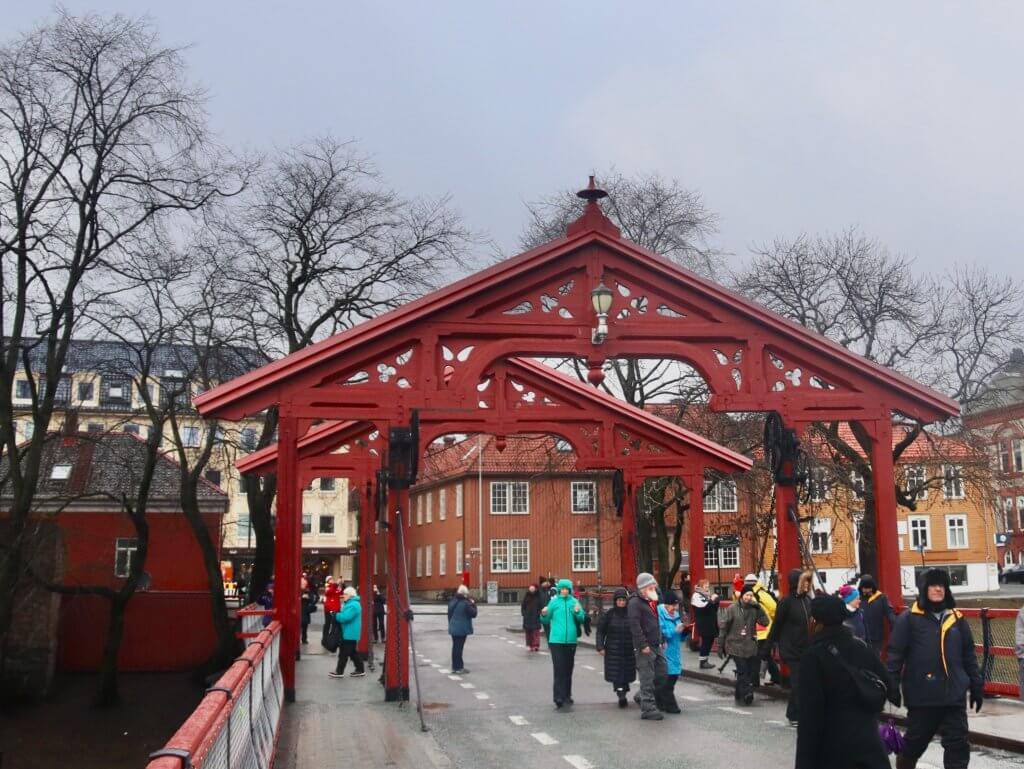
We stopped to review our progress – Oh look we are right next to a coffee shop and it looks great. In we went. Warm, smelling of delicious baked goodies and coffee. KaffeeBrenneriet was a welcome treat where a shared cinnamon scroll and a fine cup of coffee. Of course this helped our return navigation.
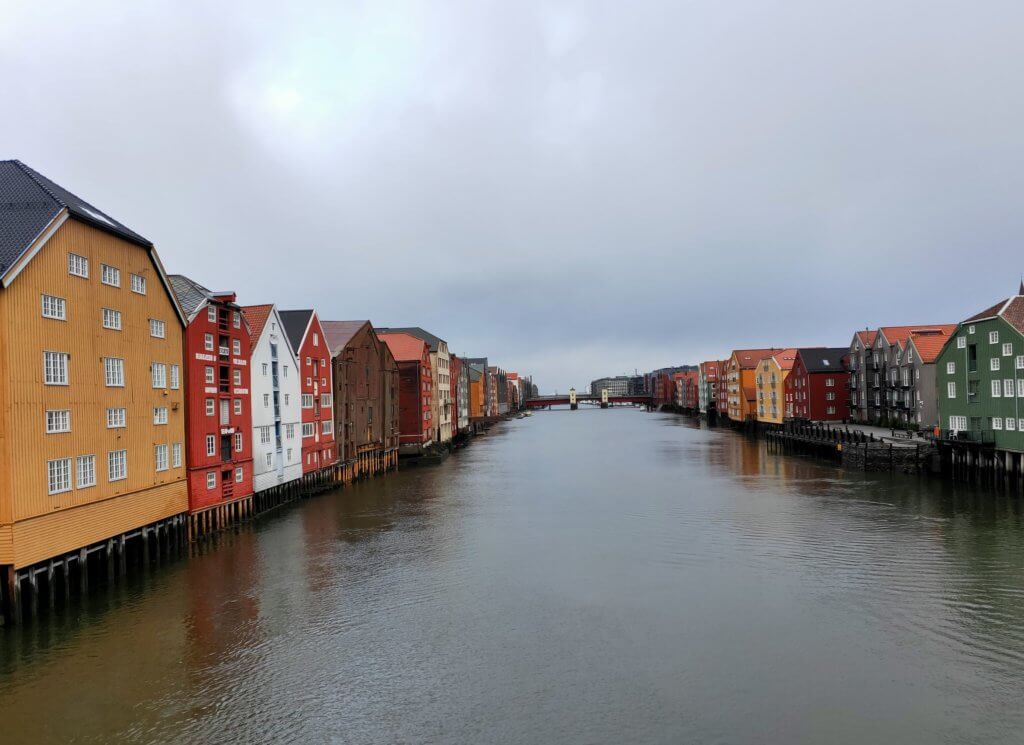
Later in the day we sailed passed the Kjeungskjær lighthouse – prior to seeing it, I had heard a family with three children and their teacher had lived in the 3 storey lighthouse before it was automated. Tough life I thought. Until I saw it – impossible life I thought. Quite a sight to sail past – a tiny red hexagonal lighthouse on a rock that disappears with the tides, in the middle of the sea. You can now rent it – what an experience, not quite the same as living there with 3 children in the past century!
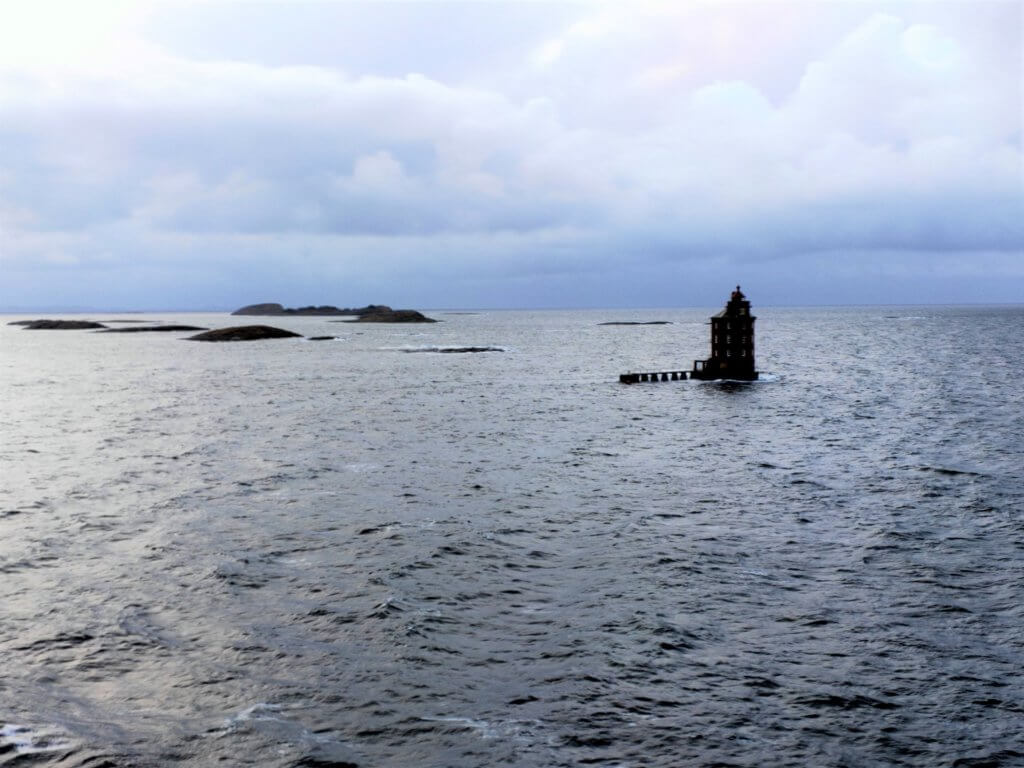
Ørnes – a small town with a lovely harbour entrance and a small working dock. It was a brief stop with opportunity to watch the comings and goings from above. I never tired of watching the seamen mooring the ship to shore: huge ropes and winches, men confidently throwing, hooking, feeding ropes. Quickly the gangplank is lowered, goods are taken off, people disembark this time a young woman greeted passionately by an energetic black dog. And we are on our way again.
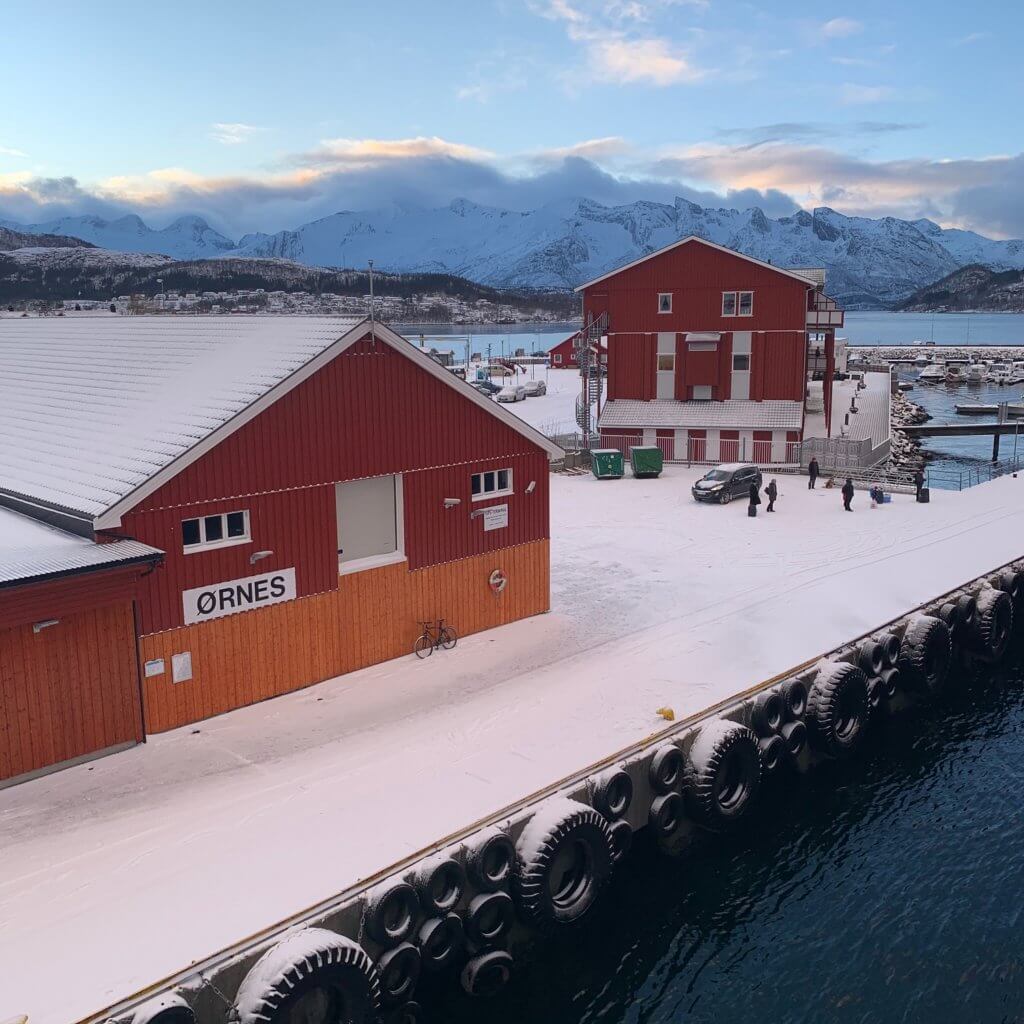
Bodø – this time a town that required no map. We walked the main street and then along a harbour path. The town like many had been decimated in the WWII “scorched earth” policy that accompanied the German retreat.
Arriving as sunset approached it was endless photography – mountains circled the town, the harbour was filled with fishing boats, wooden boats, pleasure boats of all shapes, and colours. The setting sun lit the harbour and mountains as colours changed and light sparkled then disappeared.
A town where crampons gave us confidence and maintained us in an upright position.
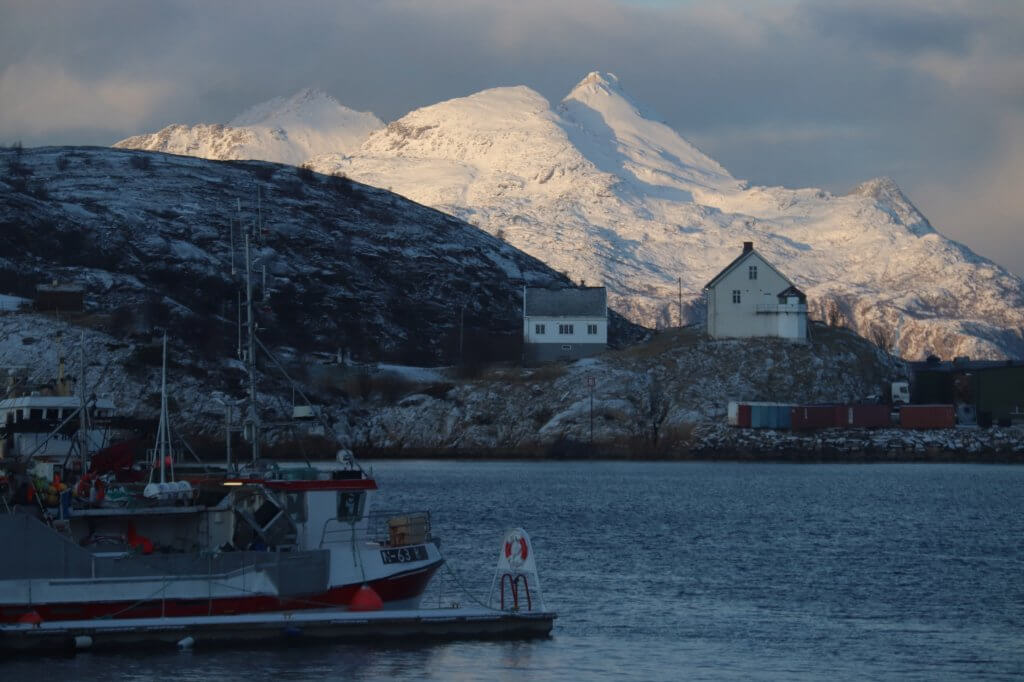
Leaving Bodø we were treated to the first of a two-part lecture on Norwegian Arctic hunting and polar history. Presented with an award-winning performance by Torstein from the Expedition team. The role-playing of polar bears and arctic conditions made the lesson more alive than any history teacher I remember. Oh but I don’t remember hearing too much back then about the achievements of Norwegians, we were too busy being taught of the marvellous Brits.
And all the while outside the scenery was consistently spectacular day and throughout the night.
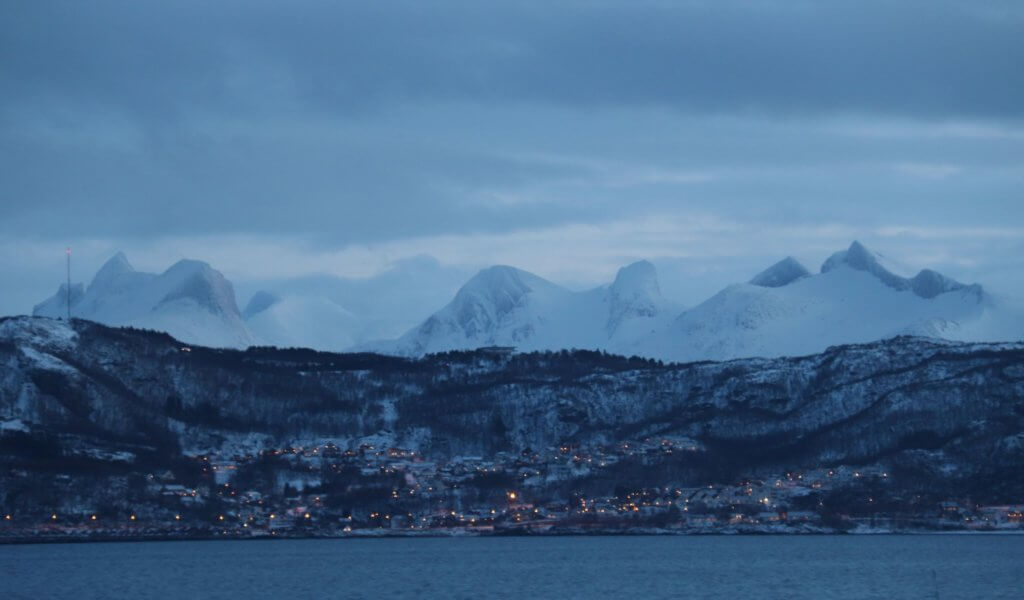
Day 5
Tromsø and the weather outlook was snow, snow and snow. Undaunted we rugged up and out we went. This was the much anticipated Husky sled ride at the Villmarkssenter. In our excitement, we debated the ethics of animal tourism only after and still came to no clear conclusion here. Some pros and cons are outlined in the comments following this article.
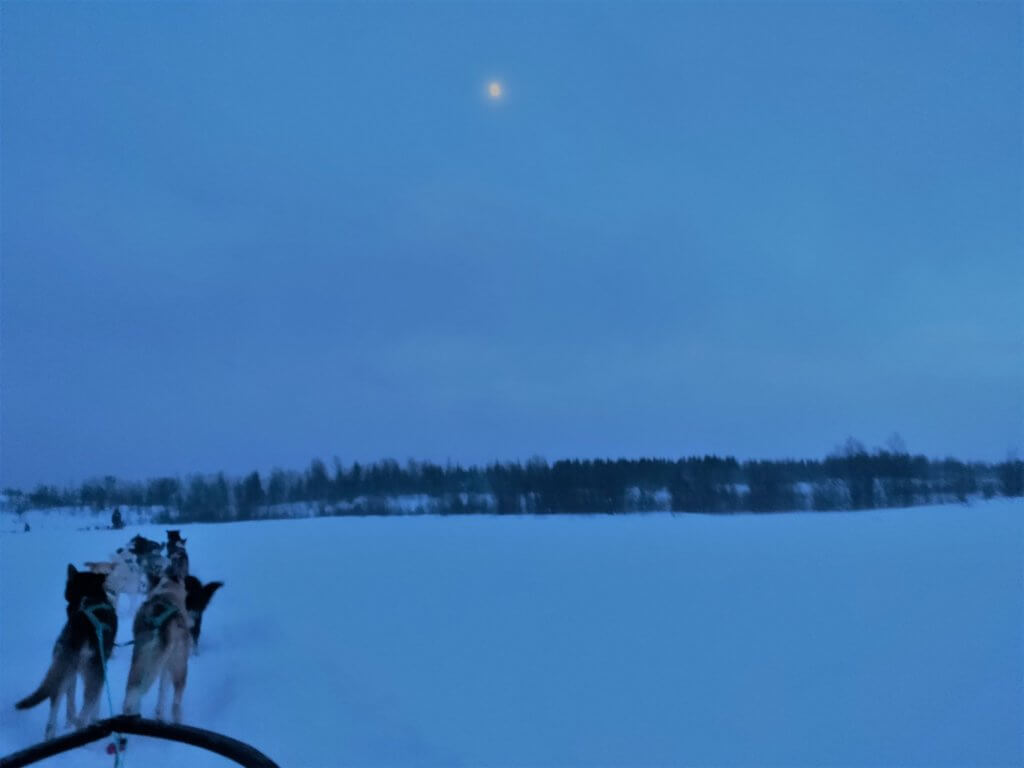
For the ride we were fortunately dressed in heavy suits, boots, and gloves.vOnce on the sled, there were rugs to further wrap us up. The bitter cold around face and eyes was a reminder of how raw the cold can be. On the journey it began snowing then as we came out from the sheltered valley it became a light blizzard – enough to convince me no Polar expedition for me.
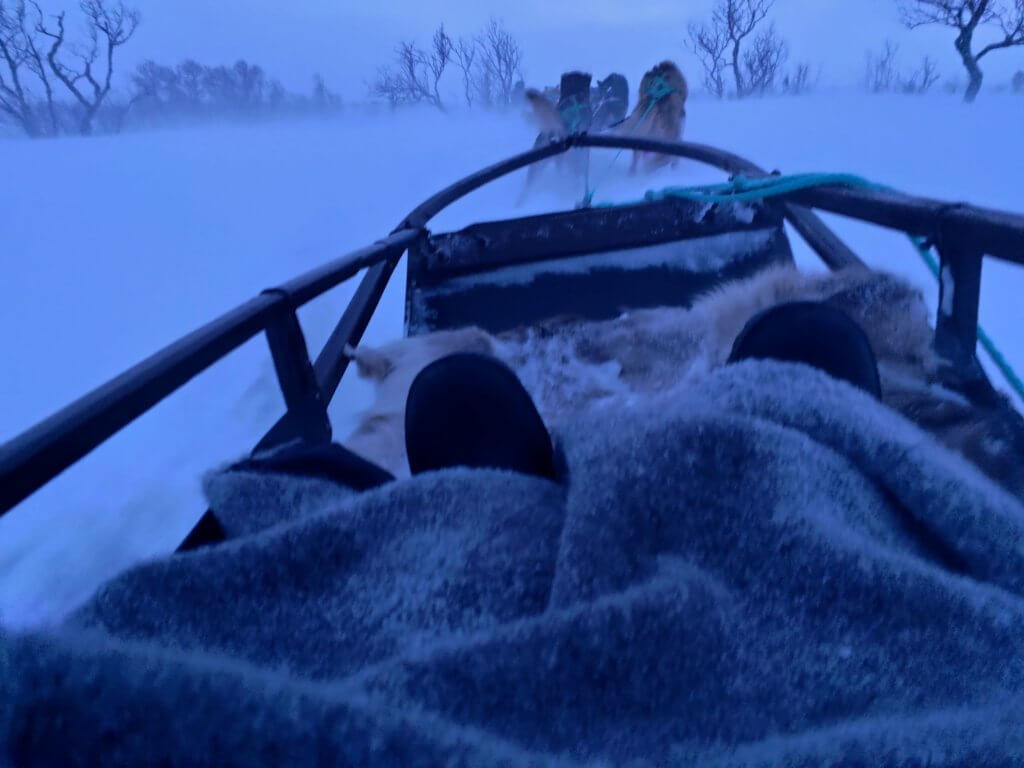
Owner Tove Sørensen has “competed 19 times in Europe’s longest dog sledding race – Finnmarksløpet.” Tove made a brief introduction at the end of our ride when she explained all further rides were cancelled owing to unprecedented snowy weather.
About 300 dogs live on the farm and share the sled rides. Retirement sees them adopted out to staff or other community members. I loved the naming – dogs are named in themes to enable quick recognition of families e.g. Batman and Robin with puppy Joker. Another family were named after herbs.
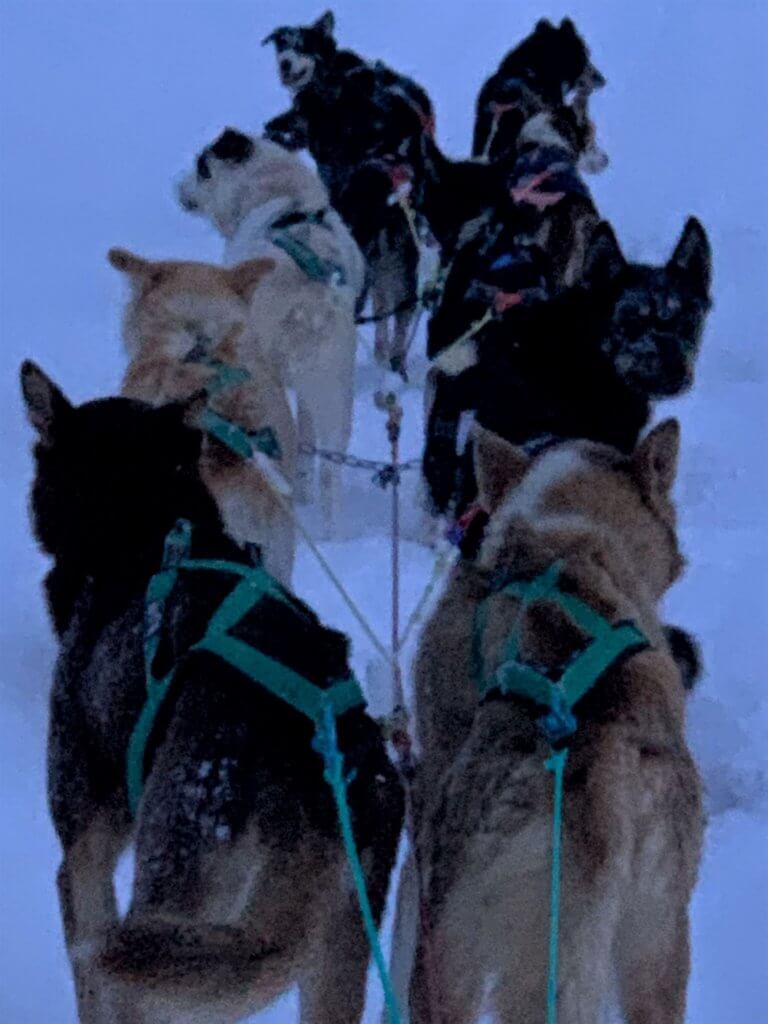
The joy of this day continued when late in the evening the Northern Lights made an appearance. More here – And Suddenly They Were Across the Sky
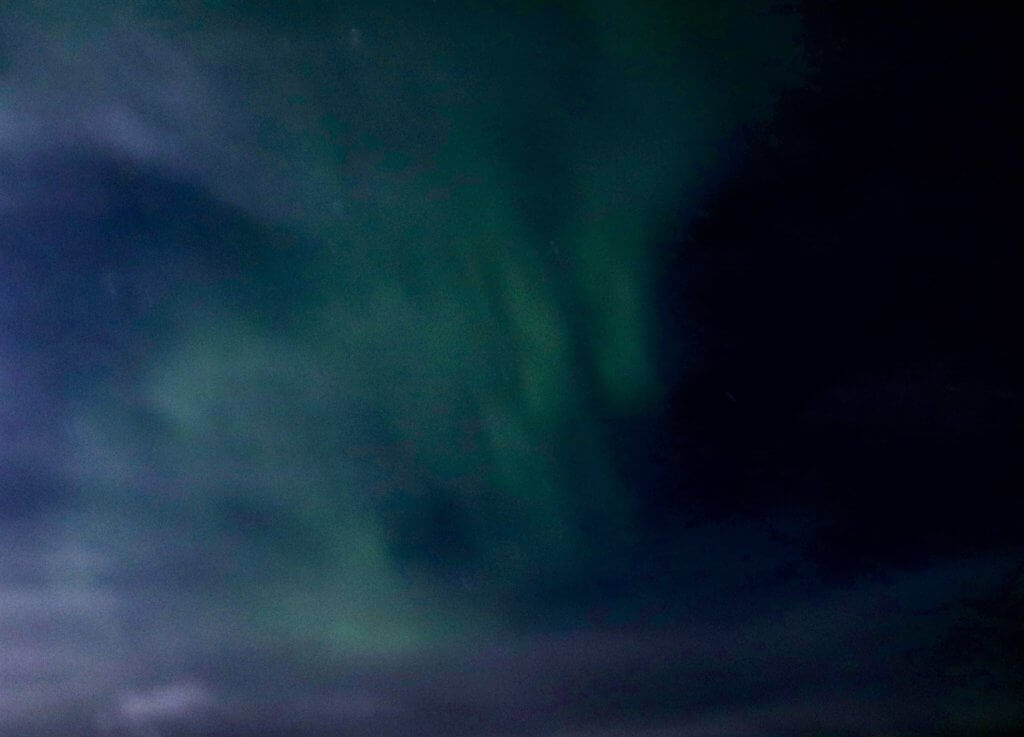

Day 6
A tiny taste of life in the North today – while a large number of excursions were scheduled most were cancelled due to weather. Heavy snow and weather had closed all roads. The North Cape had been inaccessible for days and in some places communities were cut off, flights cancelled. We sailed into Honnisvag as snow began falling.
One excursion that was not cancelled was the snow-shoeing hike. Chris and our friends signed up. I declined. They set off up the mountain. A summary of that adventure is at https://www.facebook.com/mskongharald/videos/220204142474747/
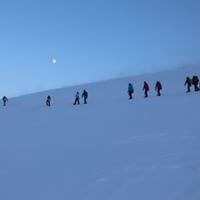
I walked through the town. Along the way, snow began falling more heavily obliterating any view of the harbour. This quickly cleared leaving a white-topped town filled with people and gadgets clearing piles of snow from homes and roads. The harbour sea contrasted the snow with a deep golden bronze colour. So gold it seemed impossible.
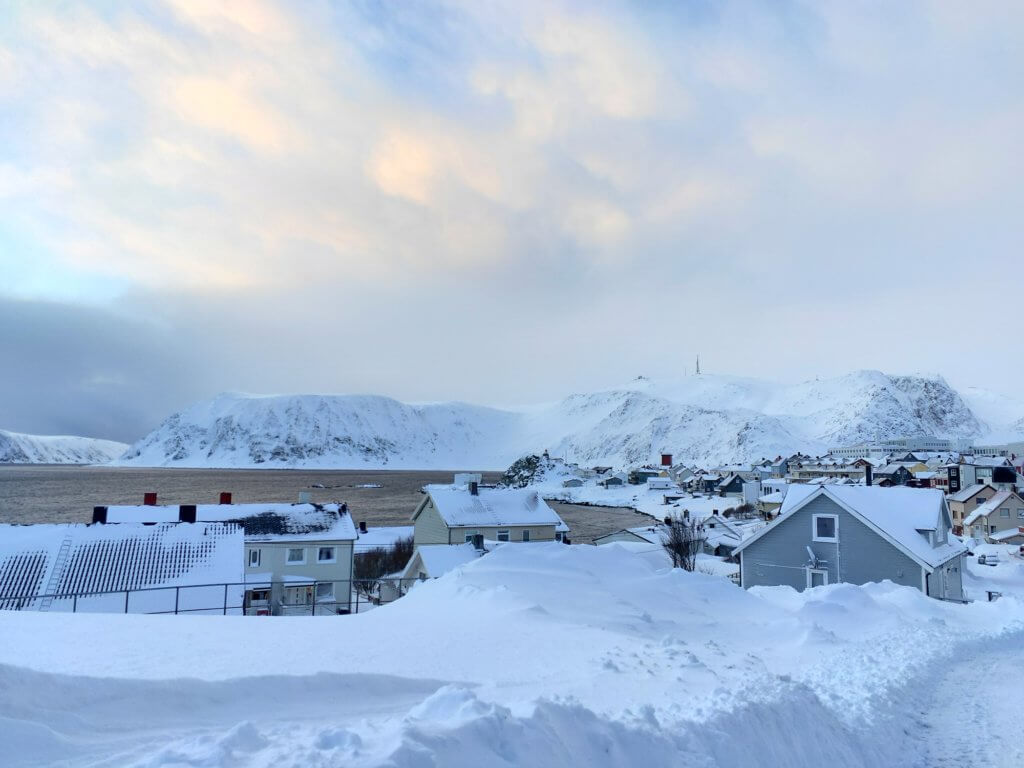
The highlight for me today was crossing the Barents sea part of the Arctic ocean bordering Russia and Norway. Nothing to see, a bit of rocking and rolling to feel, still it felt historical. Hearing and reading about it as we travelled – the Winter War when Finland lost its Barents sea access.
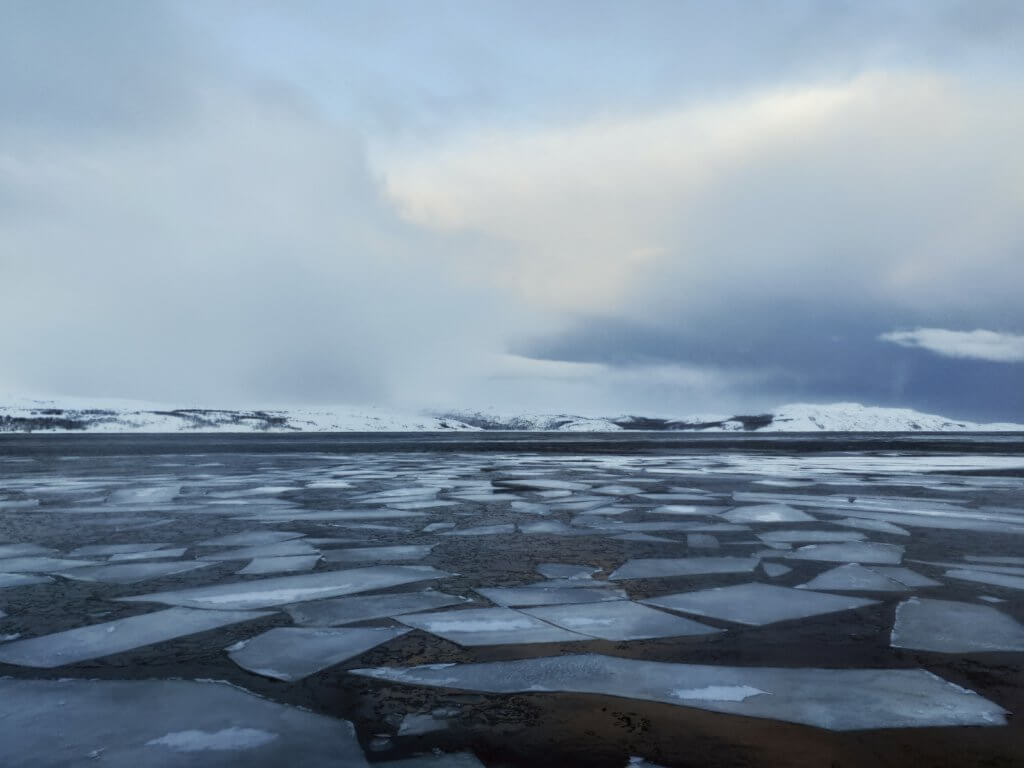
Day 7
Kirkenes the furthest town on our voyage – the point where we turned around, and northbound passengers, including our friends, left.
At the end of each briefing in the evenings, Norwegian music and art were shared. The previous night we had been introduced to the art of John Savio, a Sami man who mainly produced woodcuts – an exhibition of his work was part of the local Varanger Museum.
Much of John Savio’s exhibition at the museum evocatively shows Sami life in Northern Norway. Daily life, culture and dress including hunting, reindeer herding, craftwork. Though he died young he was a self-taught artist who later studied in Oslo, thought to be the first Sami person to do so. While only a small gallery I loved spending quiet time with his work.
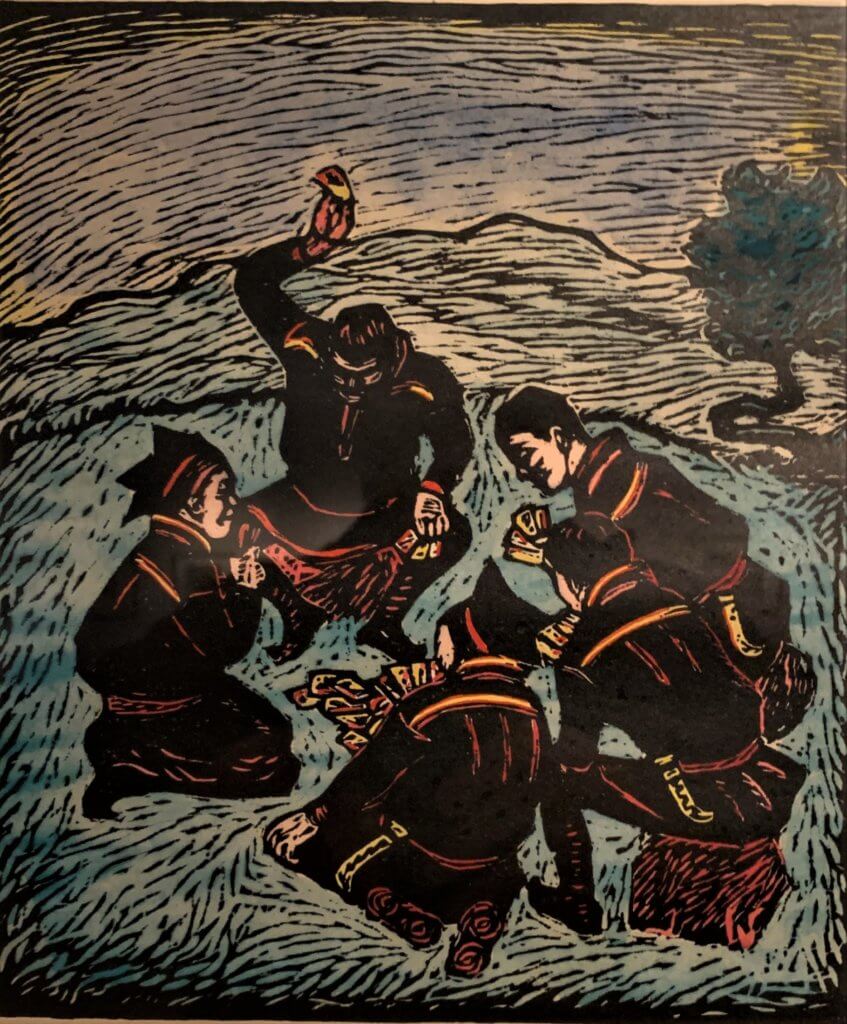
The Varanger Museum a borderlands museum (close to the Russian border) also housed a WWII exhibition and local and traditional Sami photographs and memorabilia. Something for everyone – so off we went. Stress-free time, given the bus dropping guests to hotels in the town also took us out to the museum, and returned us to the boat. This gave us a worry-free wander around the small but fascinating museum without concern for missing sailing time. Chris spent most of his time in the WWII display, and me in the John Savio exhibition. Upstairs I discovered local life displays and artic arts and crafts created using mostly natural materials by Anita Silenius
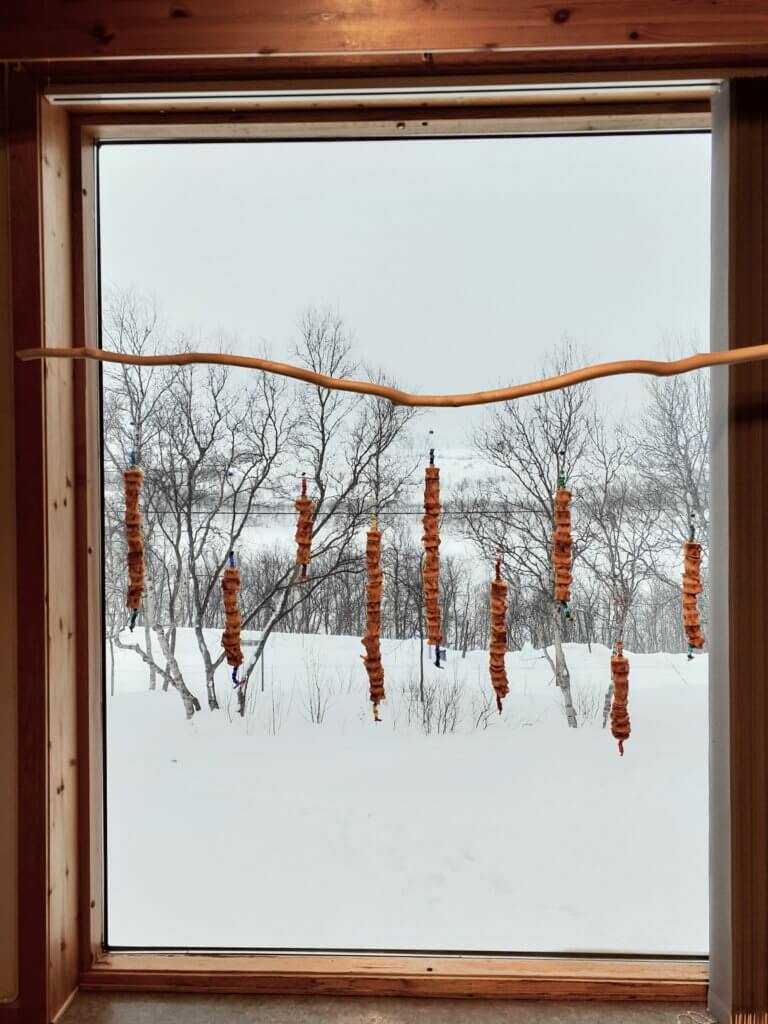
And so we turned this ship around as they say – and headed south. Southbound to Bergen
